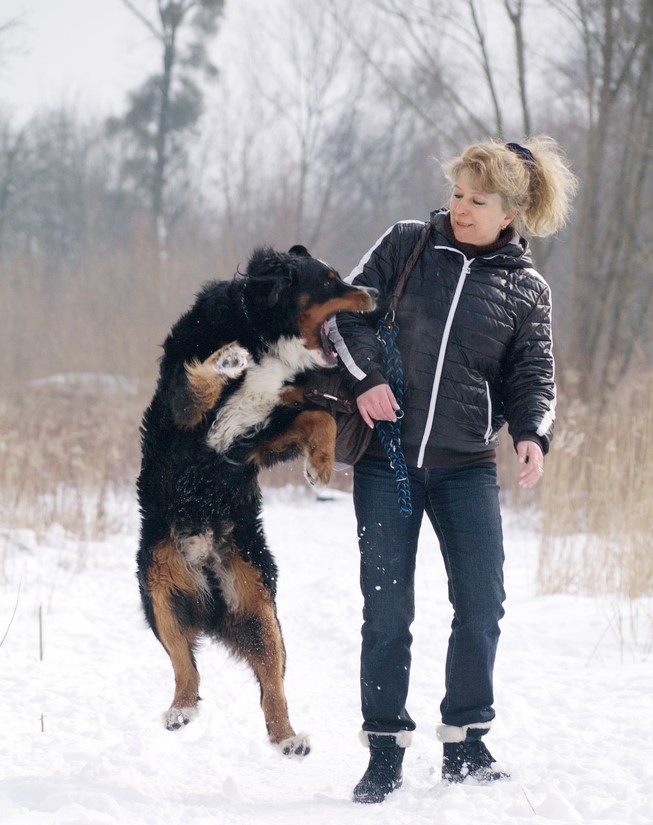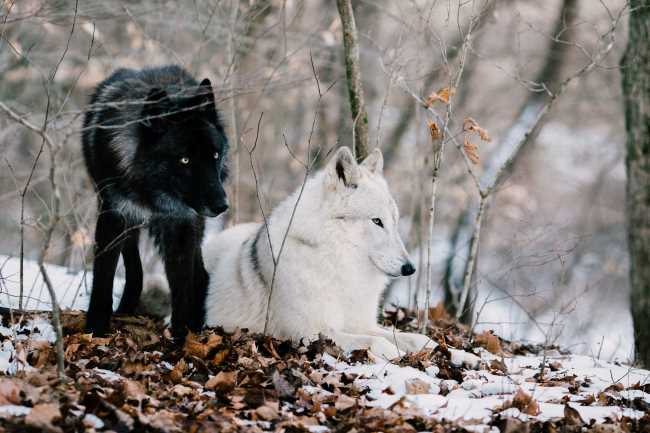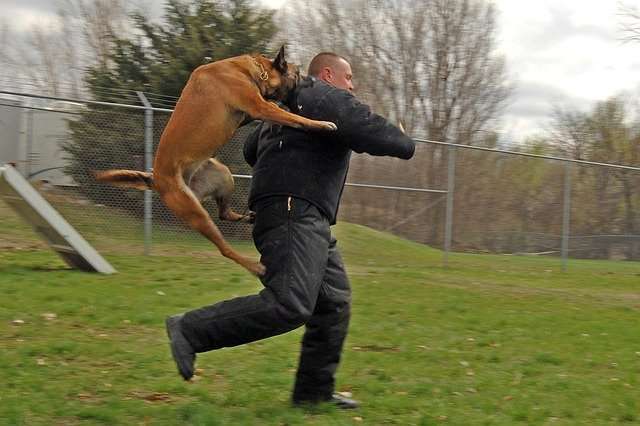How serious is dog on dog aggression? Well, it’s certainly frightening for pet parents, concerned that one of the dogs, or even an innocent bystander could be hurt.
In truth, this is not unwarranted. Owners, dogs and people who get in the way of an aggressive dog are sometimes bitten!
Certainly dog aggression towards other dogs should never be ignored.
Dangerous Dogs and Objects

Dominant dogs who attack other dogs need aggressive dog training before the situation is totally out of control.
But, if you understand how dogs think, it is possible to turn your aggressive dog into a dog who is fun to be around.
In addition to dog aggressive behavior toward people, dogs can show aggression toward objects or other dogs.
If you are looking for information about aggression towards people, this article addresses that kind of aggression.
When your dog is still a puppy, you should socialize him, getting him used to other dogs, new people, sounds and things.
While this makes your dog sociable, in theory, some dogs still don’t get the message.
Most of the time this is because your dog thinks he is the alpha Pack Leader.
Your job is to make sure that your dog knows that YOU are the Pack Leader.
What you can Expect
This article will discuss:
- Dog Aggression Toward Other Dogs
- Signs of Aggression
- Dog Aggression Toward Objects
- Psychology of Dog Aggression
- Aggressive Dog Training Tips
- Doggy Dan Video Demo on Aggression Toward Dogs
Dog Aggression Toward Other Dogs
Perhaps you are viewing this page because your dog has fought another dog or dogs. Sometimes a puppy doesn’t do well with socialization.
Most often a dominant dog tries to maintain his position as the Alpha, and he does so aggressively.
When you are working with a dominant aggressive dog, you need to be very cautious and take no chances. If your dog is trying to attack another dog, you could be hurt by being in the middle.
On the other hand, be aware that shy or submissive dogs can also be aggressive if they feel threatened. And a more submissive dog will attack with warning signs that are somewhat different.
Assuming that your dog is not sick or in pain, there are actually two main types of dog aggression: dominance aggression and fear aggression.
Signs of Aggression toward Other Dogs
So how do you know that your dog is about to become aggressive toward another dog?
Just like people, dogs express themselves with their body language. Dominant dogs and submissive dogs may express themselves differently, and a dog that is aggressive does not necessarily exhibit every single sign.
Occasionally, a dog will attack another dog aggressively, without any warning!
However, there are some common signs of aggression that you should become familiar with:
Ears
If you have an alpha or dominant dog, your dog’s ears give you a clue when he’s becoming aggressive. They will be raised and in a forward position.
For a dominant Weimaraner, the hanging part of his ears will be out from his body, as far as they can go.
For a dog that is fearfully aggressive, his ears will probably lay back.

Lips and Teeth
A dog’s lips are another indicator. When a dog is becoming aggressive, his upper lip will be raised, away from his teeth. This should not be ignored.
When a dog’s teeth are showing in this manner, especially if he’s also growling or barking, be aware that the dog is warning the other dog.
The higher the dog’s lip is raised, the greater his aggression.
Sometimes the dog has lifted his lips so high that there are wrinkles on his nose.
Still another warning is snapping or nipping at another dog. This easily turns into hard biting, so separate the dogs immediately if you see this happening.
Eyes
If a dog is the aggressor, his eyes are a dead give-away. The pupils of his eyes are dilated and usually enlarged.
In addition, a dog who is about to attack, will have direct eye contact and an intense stare directed at the dog he is about to attack.
A dog who is about to bite often exhibits what is called whale eye. This is when he flashes the whites of his eyes, just prior to the bite.
Contrary to a dominant dog who is aggressive, a submissive dog who is getting ready to defend himself, may have eyes that become slits. The slits are a sign that the dog is threatened or fearful.
Pay attention to either of these eye signs.
Body Posture
A dominant dog who is aggressive will appear to be rigid or stiff. His neck arches and his legs stiffen. The hackles (bumps) on his back are raised. The hair on his body stands up, and he looks larger.
Dominant dogs actually are bigger than they normally are. Much as a bear in the wild would do, they raise themselves up, standing erect and tall, to scare another bear or animal.
On the other hand, a fearful aggressive dog will make himself as small as possible. He will crouch down and try to make eye contact with you, his owner, as if saying, “Help me.”
A fearful dog may look as if he’s about to run. He may also urinate submissively. But he may also strike without warning.
Tail
Dogs all use their tails to express themselves.
A dominant dog who is about to be aggressive will stiffen his tail or he might be stiffly wagging it. His tail will likely be held upright. The tail will have short, quick wags, just at the tip.
A passive dog who is becoming aggressive will hold his tail between his legs in fear. He may wag his tail, but he’s not happy.
While you should be alert for these signs of aggression, dogs can strike out at another dog, without warning. So it is important that you know your dog and you are aware of any subtle changes in him.
Dog Aggression Toward Objects
Dogs can be aggressive toward the oddest things. Our dog Skipper was afraid of the grooming clippers that we use to trim her. Your dog might be afraid of the vacuum cleaner or something as simple as a fly swatter.
If your dog is afraid of objects, the object probably has these characteristics:
- Loud – a loud noise like a vacuum cleaner or grooming clippers. A submissive hunting dog could be afraid of the sound of a gun.
- Moving – often very fast. Something moving fast should be chased and attacked. It could be the wheels of a car or bicycle.
- Causes stress in you – If your dog senses that this object is making you feel anxious, she will pick up on the anxiety and attack the object making you feel bad. At our house we feel somewhat anxious when it is time to groom Skipper. She is not cooperative and hates the clippers. Skipper has actually attacked the clippers, on occasion. At your house, you may feel anxious when you swat a fly or clip your dog’s nails. Your dog will act accordingly, if he feels that he needs to protect you.
Of course none of these things deserves to be attacked. So how do you stop this silly (and potentially dangerous) behavior?
Psychology of Dog Aggression
So how do you handle dog on dog aggression? The answer lies in how your dog views you.
Here’s how it works…
The Pack
In order to successfully correct your dog’s aggressive behavior toward other dogs, you need to understand exactly why your dog is aggressive.
Dogs, of course, are canines and they have the same instincts and behaviors of their wild cousins, wolves.
They live in packs, and each pack member has a specific position in the hierarchy of the pack. In the pack, the pack leader is usually a dominant, large, older male.
The pack leader protects the other members, eats first, and makes decisions about coming and going. He decides if visitors will be allowed and who goes hunting with the group.
Your Puppy’s First Pack
When your dog was first born, his pack included his Mom and litter mates. It was here that he learned appropriate behavior for the pack. Mom was the leader, and she called the shots. She taught her litter how to behave.
The biggest, toughest and loudest puppy who growled and bit the others, became the dominant “top dog” of the litter.
On the other hand, the most submissive puppy who allowed himself to be bitten and growled at, became a submissive puppy, and had the lowest rank.
Your Dog’s New Pack
Fast forward, and your puppy is now in your home, with his new pack, your family. As he did before, your puppy will vie for position in your pack.
If your puppy is allowed to do what he wants to do, he will believe that he is in charge and the leader of your pack. Convince your dog that you are the leader before he reaches maturity, and he will listen willingly to you.
Otherwise, especially if your dog is dominant and you are not really assertive, you can end up with a really nasty aggression problem.
Aggressive Dog Training Tips
Key to all dog training, obedience or behavior, is establishing that you are the leader of your pack. Not your dog. When your dog knows his place, training becomes so much easier!
This video demonstration by Doggy Dan, Online Dog Training expert, gives you some excellent ways to approach aggressive behavior with other dogs.
You’ll notice that no violence, yelling or hitting the dog is necessary. Simply going about this the right way is all that is needed.
Note that Dan did not take any chances. They had a muzzle on the dog being trained, until they were sure that he would be OK.
Take note especially of the difference, before and after training this dog. It is truly remarkable!
You can access Doggie Dan’s full line of videos for 3 full days for just $1.
To recap, keep these tips in mind when you are training your aggressive dog:
Stay calm
Remember that a dog senses your emotions. If you are calm, your dog will stay calmer.
Start at the lowest intensity
Dan kept the dogs far apart in the beginning. Gradually they walked closer and closer to each other. The owners read the energy levels of the dogs to decide when to get closer.
Make nothing of it
If you turn your back on the dog’s perceived danger, your dog will think it is not fearful to you. If you are afraid of something (people or animals), you watch it closely. You never turn your back. Dogs observe this and act accordingly.
Distract your dog
Sometimes this works. Use a toy or pretend that you are looking for something on the floor. Sometimes distracting with a treat helps, but make sure that you are not rewarding bad behavior.
Practice
Give your dog lots of practice and opportunities to do things right. Be patient until she is able to have more freedom.
Depending of the age of your dog and his level of aggression, you may have to practice a number of times. Put your dog into situations where he has been aggressive before.
If the object of your dog’s aggression is a thing, you might let it lay on the floor of a room. Ignore the object and give your dog some good experiences in the room.
Perhaps your dog will go over, sniff and explore the thing. And she might find that it is not dangerous, after all!
You can view well over 100 dog training videos with Doggy Dan for just $1. Take advantage of this offer to watch them for 3 full days!






Leave a Reply